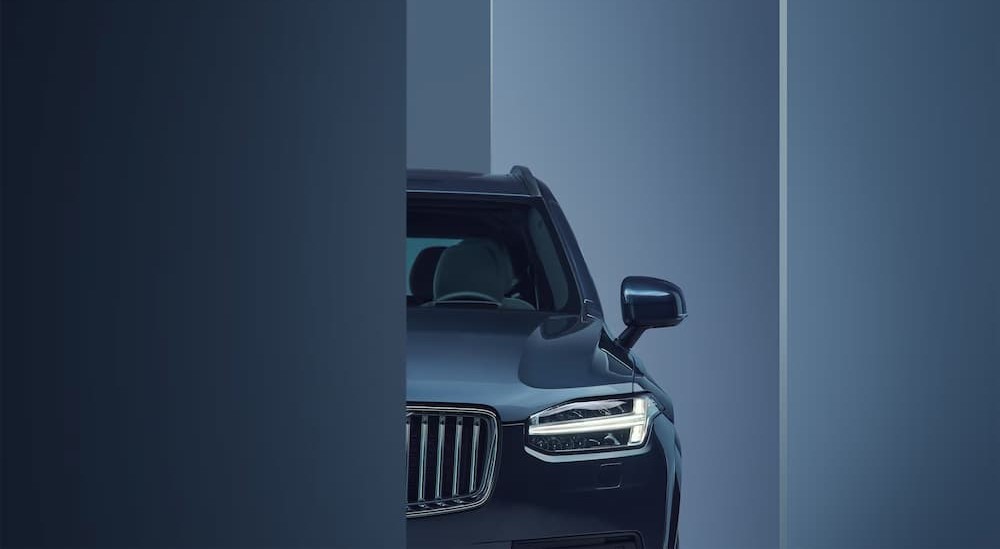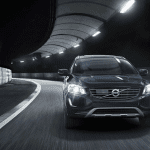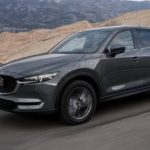If the eyes are the windows to the soul, then a car’s headlights might serve a similar function. From dull, no-nonsense designs to sportier, more unique iterations, you can learn a lot about a car, truck, or SUV based on little more than its headlights. Their design can be a divisive topic in today’s auto market, with many drivers griping about the blinding, ultra-bright, bluish LED lights of today’s late-model vehicles.
But we’re not here to wade into the great headlight debate; we’re here to share some of the most unique designs to grace the market—for better or worse. From the odd and ugly to the clever and notorious, join us as we enjoy a little flashback to some of the most memorable car headlight designs ever to grace a full-scale production vehicle…
Mazda Miata
As far as pure novelty goes, it’s hard to do better than a set of pop-up headlights. While these were a common feature on many of the sportier rides to emerge from the ’60s, ’70s, and ’80s, this design has since become a bit dated and has steadily faded from the market. While there are countless models we could use to illustrate the trend, we’ll stick with one of the most popular vehicles to employ a pop-up headlight: the Mazda Miata.
Introduced in 1989, the Miata holds the distinction of being America’s best-selling roadster. Like the classic British roadsters on which it was based, the first-generation Miata was produced with a set of round, pop-up headlights that immediately set it apart from many of its sports car contemporaries. Sadly, Mazda ditched the pop-up design going into this model’s second generation in 1997 in a decision that was largely based on concerns around pedestrian safety.
This makes the first-gen Miata particularly sought after on the preowned market—but some drivers aren’t content to settle for the garden-variety lights. The internet is full of intriguing aftermarket products, but the Wink & Sleepy Eye Mod from MX5 Tech UK has to be one of the most unique. When installed on the first-gen Miata, this mod allows drivers to control each pop-up headlight individually, creating a novel “winking” effect. The lights can also be set to partially open, creating a sleepy look that belies the Miata’s impressive performance.
Dodge Charger
From 1966 to 1970, the Dodge Charger sported one of the most unique headlight designs that the auto world had ever seen. This iconic muscle car earned plenty of attention for its luxury, performance, and fastback styling, but it was the Charger’s “hideaway” headlights that marked its most notable feature.
At first glance, the first- and second-gen Charger might look like it doesn’t have any headlights at all, with the front fascia sporting a seamless grill of vertical lines stretching from corner to corner. That all changes when you activate the headlights, which causes two panels to open in a “garage door” motion, revealing two round lamps on either side of the grille.
It’s a feature that immediately set the Charger apart from the rest of its pony car competition, giving this coupe a unique edge in a segment that was all about personal style. These hideaway headlights were an ambitious detail and prone to failure given the technology of the day, but they’ll go down in history as some of the most unique headlights to hit the market.
Buick Riviera & Opel GT
After covering the Miata and Charger, you might be asking yourself: how many different ways are there to hide a set of headlights? As it turns out, a lot.
The Buick Riviera was GM’s first foray into the personal luxury car segment and, as such, sported plenty of unique details to justify the title. One of those features was a set of hidden “clamshell” headlights that opened to display a set of vertical bulbs. While “clamshell” might sound a little classier than “eyelid,” that’s certainly a more accurate description as the metal coverings opened from above and below the bulb itself.
We should also mention the Opel GT, a front-engine, rear-drive, two-seat sports car introduced in 1968. The first-gen GT was introduced at a time when hidden headlights were all the rage, but Opel wasn’t content to settle for the pop-up design produced by many of its contemporaries. Instead, Opel opted for a one-of-a-kind “flip-up” design for the GT. When engaged, two rounded doors in the hood would rotate counterclockwise to reveal large, circular headlights. They might not be any different from a functional perspective, but they’re certainly unique.
Ford Crown Victoria Police Interceptor
While you’re not likely to spot one for sale at your local Ford dealership, the Crown Victoria Police Interceptor is easily one of America’s most recognizable cars. Most police cars can be distinguished by their paint jobs and roof-mounted strobes, but if you’re driving at night, a pair of headlights might be the only thing distinguishing a cop car from a run-of-the-mill model.
The sight of the Crown Vic’s lights in the rearview mirror has been known to strike fear into the hearts of even the most law-abiding drivers, but there are some easy ways to spot these iconic headlamps. The cruiser’s OEM headlights tend to be very rectangular except for a small, tooth-like notch on the upper outside edge, with the bottom edge of the lights running parallel to the road. A Crown Vic’s headlights are white squares surrounded by two orange rectangles, though it might be tough to spot the orange section at night unless the turn signal is illuminated.
Generations of drivers have developed the ability to spot a Crown Vic’s headlights from a distance, but that skill is becoming rapidly outdated as police and other law enforcement agencies gravitate toward newer models. The Dodge Charger, Chevy’s Caprice, Tahoe, and Impala, and Ford’s Taurus and Explorer are some of the new favorites among police, forcing drivers to familiarize themselves with a whole new slate of headlight designs.
Tucker 48
Unless you frequent classic car shows or automotive museums, you’re unlikely to ever spot a Tucker 48—but you’ll certainly know when you do. That’s because this sedan featured one of the more off-beat headlight designs of its time, with the traditional driver- and passenger-side headlights complemented by an additional light placed smack-dab in the middle of the front fascia.
Designed to improve safety during nighttime driving, the central headlight has an intriguing trick up its sleeve: it turns as the driver moves the steering wheel to the left and right in a bid to better illuminate curves in the road. Unfortunately, safety wasn’t much of a selling point back in the late 1940s, and this sedan was only produced for a single year, with just fifty models rolling off the assembly line in that time.
Volvo XC90
While the Volvo brand is traditionally defined by its focus on safety, this Scandinavian automaker also knows how to keep things interesting from a style perspective. The company’s boxy sedans and station wagons were a fixture of ’80s and ’90s design, but Volvo has also carved out a niche on the lighting side with the introduction of the XC90 SUV.
In a nod to Norse mythology, the Swedish automaker outfitted the second-generation XC90 with T-shaped LED headlights that resemble a hammer—but not just any hammer…
Nicknamed “Thor’s Hammer” by Volvo designers, these modern LED headlights are inspired by Mjölnir, a name that should be familiar to any mythology buffs or Marvel fans. Mjölnir (which literally translates to “lightning-maker”) is a particularly appropriate choice for ultra-bright headlights, which can illuminate the road like a lightning strike on a dark night. Volvo has since extended the “Thor’s Hammer” headlight design to a number of models, including the Volvo XC40, Volvo C40, and all-electric Volvo EX90.
The Best Headlights in Automotive History
Headlights might not be the first feature a driver thinks about when shopping for a new or used vehicle, but they play a vital role in safety and style. The right set of headlights can make all the difference in setting a car, truck, or SUV apart from the competition, which is why automakers are always on the hunt for the latest and greatest design.
While some of the aforementioned headlights might have been little more than flash-in-the-pan experiments in automotive design, others have stood the test of time and inspired a new generation of vehicles. Tightening safety guidelines have seen automakers drift away from some of the more ambitious, protruding designs like those found on the original Mazda Miata and Opel GT, but the Volvo XC90’s slick “Thor’s Hammer” design proves there is still plenty of room for innovation in the world of modern headlight design.




